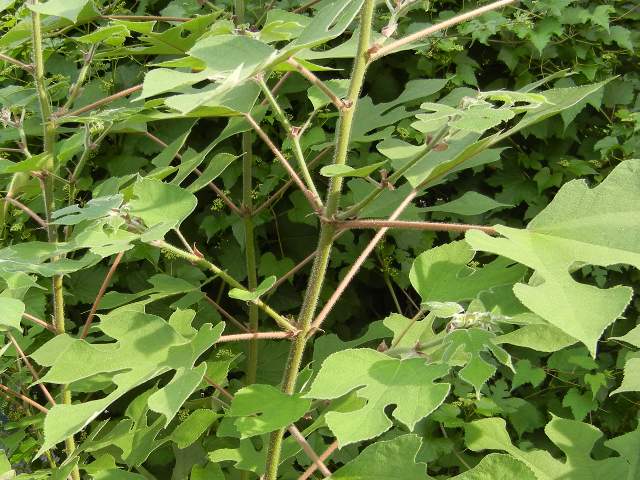Paper Mulberry Tree Showing Both Alternate and Opposite Leaves
In Albums: Philadelphia plants

Jun 22nd, 2011, by Alex Zorach
This photo is of a young paper mulberry tree (Broussonetia papyrifera), growing wild in Philadelphia, PA. This particular tree is growing on the west side of the street on St. Mark's Square, just south of Spruce St. in West Philadelphia. The paper mulberry tree is an aggressive, non-native species, and is widespread in the city of Philadelphia. While it is usually considered invasive, it does provide some benefit in that it is a robust tree that will grow well in urban conditions, including disturbed ground, industrial areas, and vacant lots, and it does create shade and green in areas that otherwise do not have much.
What I find most interesting about this photo is that this single plant shows two distinct leaf arrangement patterns. Most plants either have alternate leaf arrangement / branching patterns, or opposite. For example, maples, ash trees, and plants in the mint family usually have opposite leaf arrangement, whereas oak trees, poison ivy, and most mulberry trees have alternate arrangement. The paper mulberry, however, is interesting in that it can have either alternate or opposite branching. Frequently, as this photo demonstrates, both arrangement patterns will be evident on the same plant.
Look carefully at the stalk on the right: you can clearly see the leaves branching out in an opposite pattern, but follow this stalk to the top and you will see an alternate pattern. Not only do both patterns exist on the same plant, but both exist on the same branch or stalk. The branch on the left in the picture shows only an alternate arrangement.